The Pyramid Electric
Evidence for Advanced Technologies in Ancient Egypt
Adaptation from
Lost Technologies of Ancient Egypt:
Advanced Engineering in the Temples of the Pharaohs
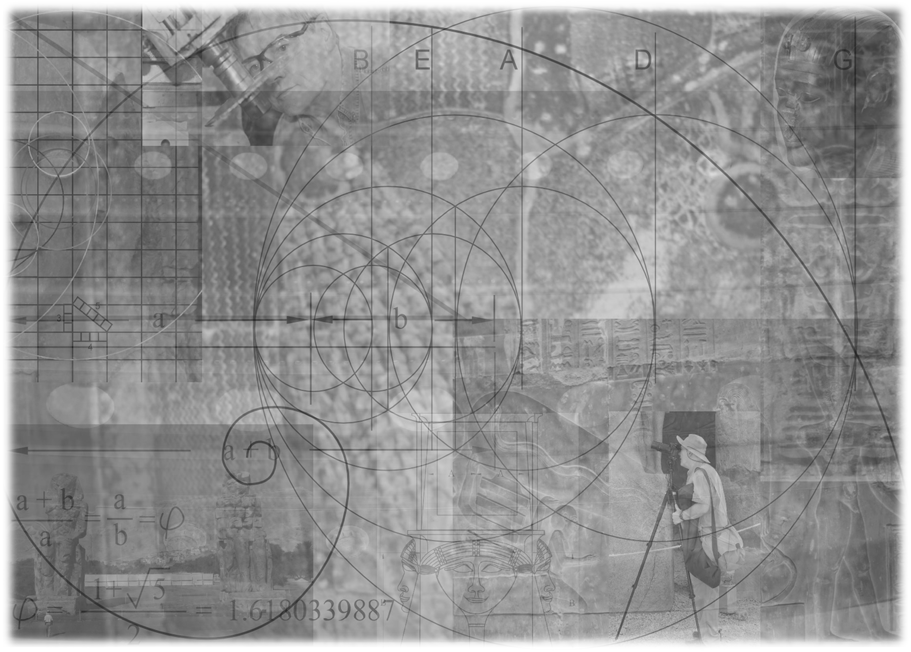
By Christopher Dunn
The landscape of the ancient world is dotted with fabulous structures that are breathtaking in their complexity. The Egyptians and Mayans had their pyramids and temples. The Hindus crafted elaborate temples throughout Asia. The Greeks built the Parthenon, and the Babylonians constructed the Jupiter Temple and the fabled Hanging Gardens.
The Romans made their mark all over their world, with engineering geniuses guiding the construction of their famous roads, the Coliseum, and numerous temples and viaducts, while Roman sculptors guided their chisels over marble and alabaster, giving it physical presence and beauty.
With the exception of artifacts such as the mysterious Antikythera Mechanism, an astronomical computer found by fishermen on the sea floor near the island of Antikythera in 1901, the development of technology in the ancient world seems to have clear origins and is fairly well understood.


Figure 1. Entrance to the Serapeum
Going back yet further in time, a deeper mystery lies in the question of how the ancient Egyptian civilization could have flourished for three thousand years without improving the tools used to quarry and shape stone to near perfection. Since 1984, when Analog magazine published my article “Advanced Machining in Ancient Egypt?” controversy on this subject has persisted. The article proposed that the ancient Egyptians were more advanced than previously believed and that they used advanced tools and methods to cut granite, diorite, and other difficult-to-work stone. It does not seem credible that brilliant architects and engineers would continue to use stone tools and copper chisels for three millennia.
The most stunning and convincing artifacts that clearly contradict theories about how hard igneous rock was quarried and worked in prehistory are the incredible granite and basalt boxes in the rock tunnels of the Serapeum at Saqqara. Within these mysterious tunnels that were carved out of the limestone bedrock are over 20 huge granite boxes. These 70 ton boxes with their 20 ton lids were quarried at Aswan over 500 miles away and installed in arched crypts recessed into the walls of the labyrinth of underground tunnels.
All of the boxes were finished on the inside and the bottom side of the lid, but not all were finished on the outside. It appears that work stopped suddenly in the Serapeum, for there were boxes in several stages of completion: boxes with lids, boxes that had yet to have the lids placed on them, and the rough box and lid near the entrance. The floor of each crypt was several feet lower than the tunnel floor. Iron railings were installed to prevent visitors from falling.
In 1995 I inspected the inside and outside surfaces of two boxes in the Serapeum with a 6-inch precision straight edge that was accurate to .0002 inch.
In one of the crypts there is a granite box with a broken corner, and this box is accessible by means of steps down to the lower floor. The outside of the box appears to be roughly finished, but the glint of a high polish on the inside surfaces beckoned me to climb inside. Running my hand along the surface of the granite reminded me of the thousands of times I have run my hand along a granite surface plate when I was working as a machinist and later as a tool and die maker. The feel of the stone was no different, though I was not sure of its flatness or accuracy.
To check my impression, I placed the edge of my precision-ground parallel against the surface—and I saw that it was dead flat. There was no light showing through the interface of the steel and the stone, as there would be if the surface was concave, and the steel did not rock back and forth, as it would if the surface was convex. To put it mildly, I was astounded. I did not expect to find such exactitude, because this order of precision is not necessary for the sarcophagus of a bull—or any other animal or human.
I slid the parallel along the surface both horizontally and vertically, and there was no deviation from a true, flat surface. The flatness was similar to precision-ground surface plates that are used in manufacturing for the verification of exactly machined parts for tools, gauges, and myriad other products that require extremely accurate surfaces and dimensions. Those familiar with such products and the relationship between gauges and surface plates know that the gauge may show that the stone is flat within the tolerance of the gauge—in this case 0.0002 inch (0.00508 millimeter) flatness. If the gauge is moved 6 inches along the stone surface, however, and the same conditions are found, it cannot be claimed with certainty that the stone is within the same tolerance over 12 inches—unless the plate has been inspected by another means and is calibrated to a known standard.
Nonetheless, moving the steel edge along the granite provided enough information for me to conclude that I needed a longer straight edge—and, preferably, even more sophisticated alignment equipment—to determine the accuracy of the inside surfaces of the box. I was also impressed to find that each corner of the box had a small radius that ran from the top of the box to the bottom, where it blended with the corner radius of the floor of the box.
The artifacts I have measured in Egypt have the marks of careful and remarkable manufacturing methods. They are unmistakable and irrefutable in their precision but origin or intent will always be open to speculation. The following series of photographs were taken inside the Serapeum on August 27, 2001. Those taken of me inside one of these huge boxes show me inspecting the squareness between a 27 ton lid and the inside surface of the granite box on which it sits. The precision square I used was calibrated to .00005 inch (that is 5/100,000 of an inch) using a Jones & Lamson comparitor.
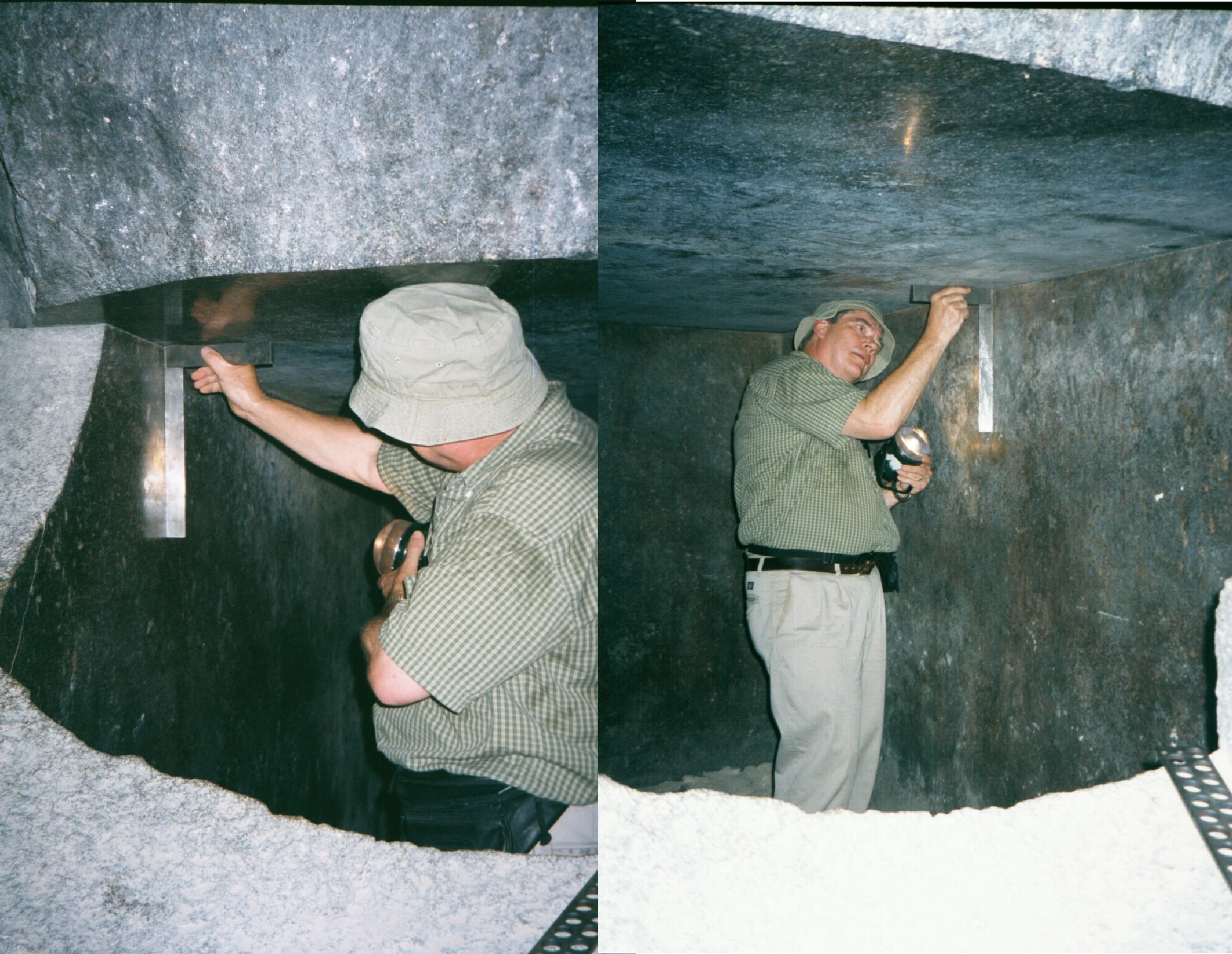
Figure 2. Inspecting the inside of the granite boxes
The underside of the lid and the inside wall of the box I found to be square, and finding that the squareness was achieved not just on one side of the box but both, raises the level of difficulty in accomplishing this feat.
Think of it as a geometric reality. In order for the lid to be square with the two inside walls, the inside walls would have to be parallel to one another along the vertical axis. Moreover, the topside of the box would need to establish a plane that is square to the sides. That makes finishing the inside exponentially more difficult. The manufacturers of these boxes in the Serapeum not only created inside surfaces that were flat when measured vertically and horizontally, they also made sure that the surfaces they were creating were square and parallel to each other, with one surface, the top, having sides that are 5 feet and 10 feet apart from each other. But without such parallelism and squareness of the top surface, the squareness noted on both sides would not exist
The flat surfaces of the inside of the boxes exhibited a high degree of accuracy that is comparable to surfaces found on surface plates in modern manufacturing facilities.
Finding such precision from any epoch in human history leads one to conclude that a sophisticated system of precise measure must have been in existence. This is an area of intense interest to engineers—such as myself—who find in Egypt a language with which we are familiar. This is the language of science, engineering, and manufacturing. Our counterparts in that ancient land left future generations of scientists, engineers, architects, and those who take their instructions and shape materials to their specifications, with a difficult challenge. This challenge is to recognize what they created and provide evidence-based, reasonable answers that give the ancient engineers credit for what they achieved.
The ancient Egyptians who built the pyramids and temples, who crafted monumental statues out of igneous rock, were thinking with the minds of architects, engineers, and craftspeople. Were ancient archaeologists responsible for the legacy they left us? Without the advice of modern Egyptian architects, engineers, and craftspeople, are today’s Egyptian archaeologists missing something? Are modern interpretations of the awesome feats of the ancient Egyptians irrelevant in providing new and powerful information about this ancient culture? Are the thoughts and conclusions of Western writers and travelers who stood in front of the Great Pyramid one hundred years ago (or some forty-five hundred years [?] after it was built) more intrinsically linked to the ancient Egyptian mind than those who come after them, a century or more later? What can be described as a “modern perspective?” In his time, Herodotus would surely have been considered modern. So were Egyptophiles Petrie, Marriette, Champollion, and Howard Carter—each in possession of a modern mind that was clothed in a fabric of prejudices and stereotypes that existed within their own culture.
When it comes to completely understanding the ancient Egyptians’ level of technological prowess, there can be no final conclusion. What is left to study today is a mere skeleton of what existed at the time of the ancient Egyptians. This skeleton survives as highly sophisticated and precisely crafted sedimentary and igneous rock. It is my belief that the clothes we have placed on this skeleton are mere rags compared to what should be there.
I have proposed in the past that higher levels of technology were used by the ancient Egyptians, but for the sake of argument, I have rejected some ideas and cast doubt on my previous assertions as to the level of technology they enjoyed. At the same time, I cast doubt on the methods of manufacture that Egyptologists have asserted were used to build the pyramids and the glorious temples in Egypt. These methods are primitive and include stone and wooden mallets; copper chisels; tube drills and saws; and stone hammers for quarrying, dressing, and sculpting hard igneous rock.
Having knowledge of the incredible precision in the boxes in the Serapeum, we should be reminded of the work of Sir William Flinders Petrie, who measured and recorded for prosperity the marvelous layout of the Giza Plateau, and particularly the accuracy and true alignment of many of the features found in the Great Pyramid. His measurements discovered that the casing stone were cut within .010 inch and the constructed portion of the Descending Passage was accurate to within the thickness of a thumbnail (.020 inch) over a length of 150 feet.
To understand how the ancient Egyptians created these testaments to manufacturing prowess, we need to rely on an examination by scientists and engineers. They would take measurements with modern tools and analyze the full scope of the work and compare them with our own capabilities. The full scope of the work includes the most difficult aspects of the work, which are ignored by Egyptologists when they attempt to explain how the ancient Egyptians created their monuments.
For instance, dragging a 25 ton block of granite over wooden rollers, with great difficulty, does not explain how a 500 ton obelisk or monolithic statues weighing 1000 tons were moved by prehistoric people. Bashing out a few cubic centimeters of granite with a dolerite ball does not explain how thousands of tons of granite were extracted from the bedrock and shaped with extreme precision and displayed as monumental pieces of art in the temples of Upper Egypt. To know the true majesty and capability of the ancient Egyptians, one only has to know and appreciate the full extent of their work.
While the boxes in the Serapeum present a significant challenge to those who attempt to explain ancient Egyptian craftsmanship, they are not complex surfaces, like the surfaces that combine to create the magnificent statues of Ramses II that grace the Temples of the South and the North. But why, you might ask, would I turn my attention away from engineering precision to a sculpture? Because the monolithic statues of Ramses issue a challenge to all who would care to explain how they were made.
What am I?
How did I come to exist?
Make another just like me!
What does the face of Ramses have in common with a modern precision engineering object, such as an automobile? It has flowing contours with distinct features that are perfectly mirrored one side to the other. The fact that one side of Ramses face is a perfect mirror image to the other implies that precise measurements had to have been used in its creation. It means that the statue was carved in intricate detail to create precise three-dimensional surfaces. The jaw-lines, eyes, nose and mouth are symmetrical and were created using a geometric scheme that embodies the Pythagorean Triangle as well as the Golden Rectangle and Golden Triangle. Encoded in the granite is the sacred geometry of the ancients.
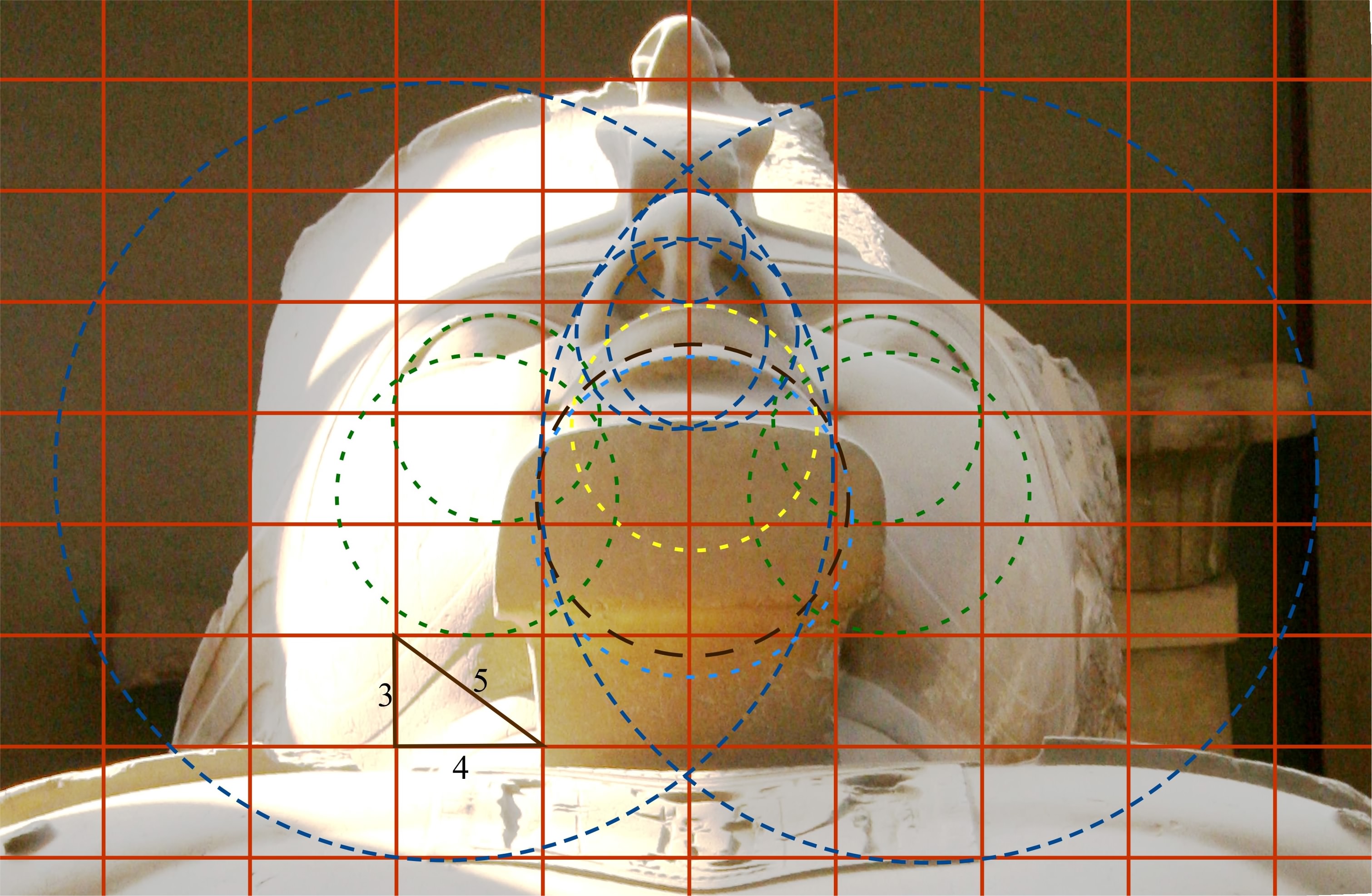
Figure 3. The Statue of Ramses at Memphis
When I was researching for my book, The Giza Power Plant, I had my first encounter with Ramses the Great. This was at the open air museum at Memphis. It was in 1986 and my interest was mostly engineering and the pyramids, so I was not necessarily interested in statues or visiting the temples in the south. It struck me as peculiar at the time, though, that while looking down the length of the 300 ton Ramses statue I noticed that the nostrils were identically shaped and symmetrical. The significance of this feature gained more prominence when I eventually visited the temples in 2004 and became fascinated with the three-dimensional perfection of the Ramses statues at Luxor. This fascination prompted me to gather digital images so that I could examine some of the features of Ramses in the computer. What I discovered was remarkable in that the images revealed a much higher level of manufacturing technology than what has been discussed previously.
In gathering the images of Ramses, it was important that the camera was oriented along the central axis of the head. This way the distribution of material on the left and right side was equal. In order to compare one side of the face to the other, a copy of the image was made, flipped horizontally and made 50% transparent. Then the reverse image was positioned over the original to compare the two sides. The results are remarkable. The stunning implications are analogous to looking through the static interference pattern of time and confusion and seeing the elegance and precision that is normally built into a Lexus in a place where only the most rudimentary techniques of manufacturing are thought to have existed. The techniques that the ancient Egyptians are supposed to have used—those taught us in school—would not produce the precision of a Model T Ford, let alone a Lexus or a Porsche.
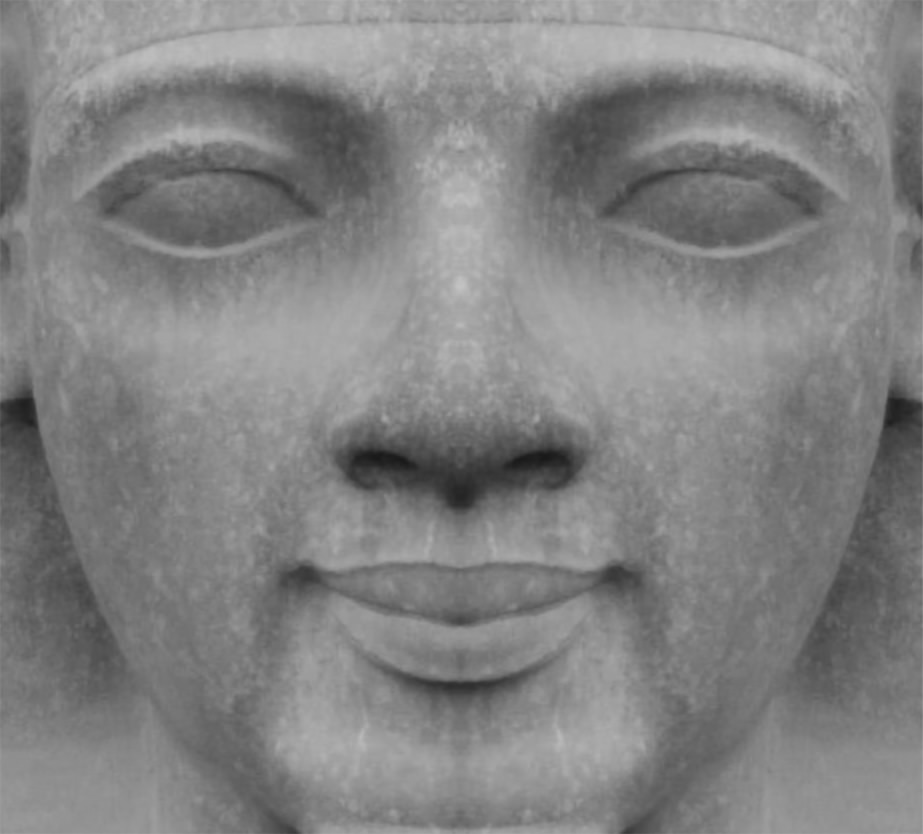
Figure 4. The Symmetry of Ramses at Luxor
We know that the ancient Egyptians used a grid in their designs, and that such a method or technique for design is intuitively self-evident. It does not require a quantum leap of an artisan’s imagination to arrive at what is today a common design method. In fact, it is used now not just for design, but also for describing organizational and conceptual methodology. Grids, graphs, and charts are used to convey information and to plot and organize work.
With this in mind, therefore, I took the photograph of Ramses and laid a grid over it. Of course, my first task was to establish the size and number of the cells used in the grid. I assumed that the features of the face would lead me to the answer, and studied which features were most prominent. After musing over this puzzle for a while, I took a chance on a grid that was based on the dimensions of the mouth. It seemed to me that the mouth had something to tell us due to its unnaturally upturned shape, so I placed a grid with cell dimensions that were the same height and half the width of the dimensions of the mouth. It was then a simple matter to generate circles based on the geometry of the facial features. I didn’t expect, though, that they would line up with grid lines in so many locations. In fact, I was astounded by this discovery. Going through my mind was: “Okay—now when does this cease to be a coincidence and become a reflection of truth?”
Plumbing the grid for further information, I discovered that Ramses’ mouth had the same proportions as a classic 3-4-5 right triangle. The idea that the ancient Egyptians had known about the Pythagorean triangle before Pythagoras, and they may have even taught Pythagoras its concepts, has been discussed by scholars, though not without controversy. Ramses presented me with a grid based on the Pythagorean triangle, whether it was the ancient Egyptians’ intentions or not. As we can see in figure 5, the Pythagorean grid allows us to analyze the face as it has never been analyzed before.
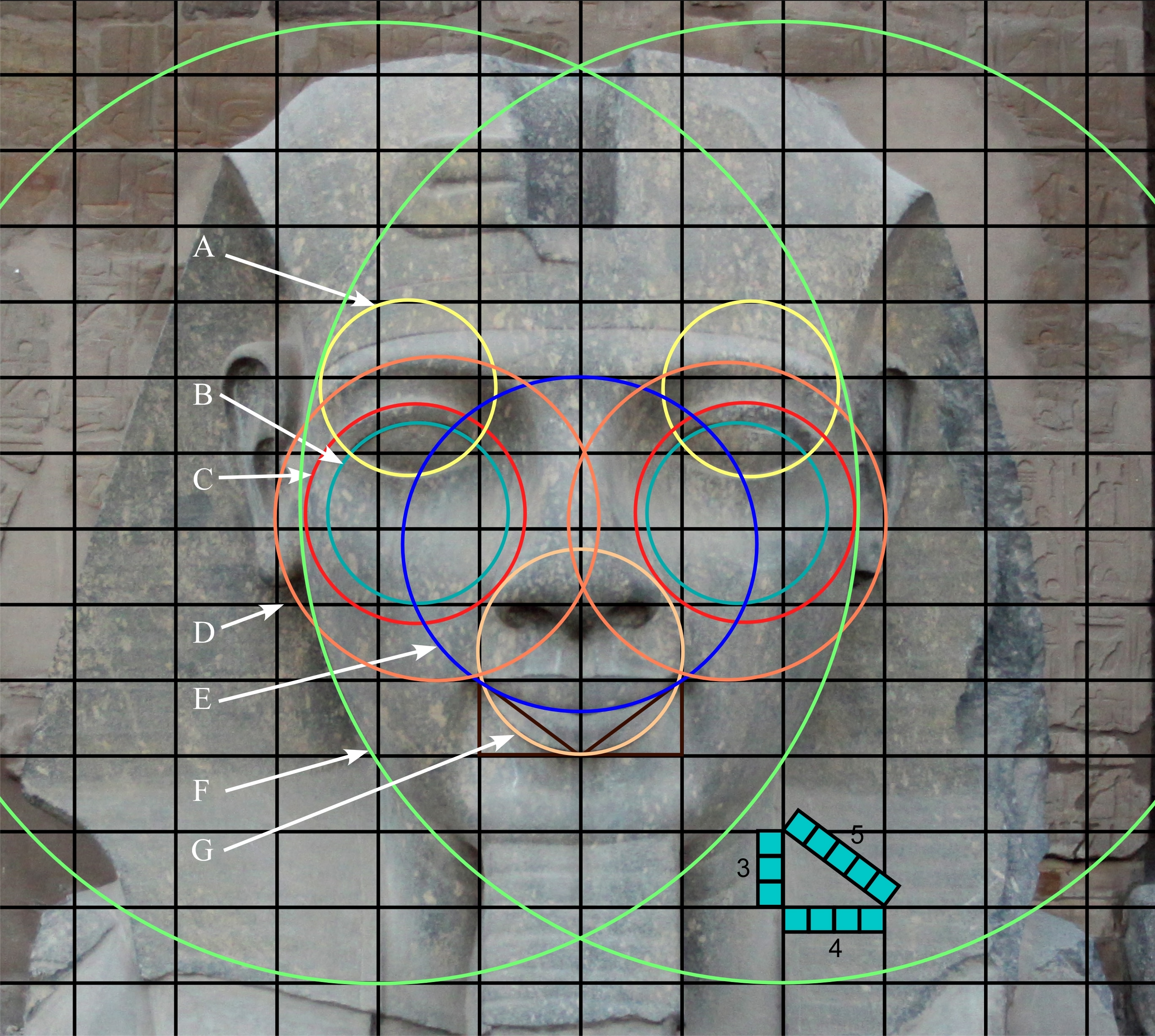
Figure 5. The Geometry of Ramses at Luxor]
The Ramses geometry and precision and the discovery of tool marks on some of the statues are discussed at greater length in Lost Technologies of Ancient Egypt. Small seemingly insignificant mistakes made by ancient tools bring to light information from which a precise controlled method of manufacture can be discerned.
Other remarkable features of machining on granite are also examined, but probably the most stunning example of ancient machining lies on a wind-swept hill 5 miles from the Giza Plateau. Abu Roash has recently been advertised as the “Lost Pyramid” by Zahi Hawass, the secretary general of the Egyptian Supreme Council of Antiquities, even though it has been well known and written about for many years. I wasn’t expecting much when I first visited the site in February 2006, but what I found was a piece of granite so remarkable that I returned to that site 3 more times to show witnesses in order to explain its unique features. Those who accompanied me on different occasions were David Childress, Judd Peck, Edward Malkowski, Dr. Arlan Andrews and Dr. Randall Ashton. Edward Malkowski immediately dubbed the stone the new rose-red Rosetta Stone. Mechanical engineer Arlan Andrews independently came to the same conclusion.
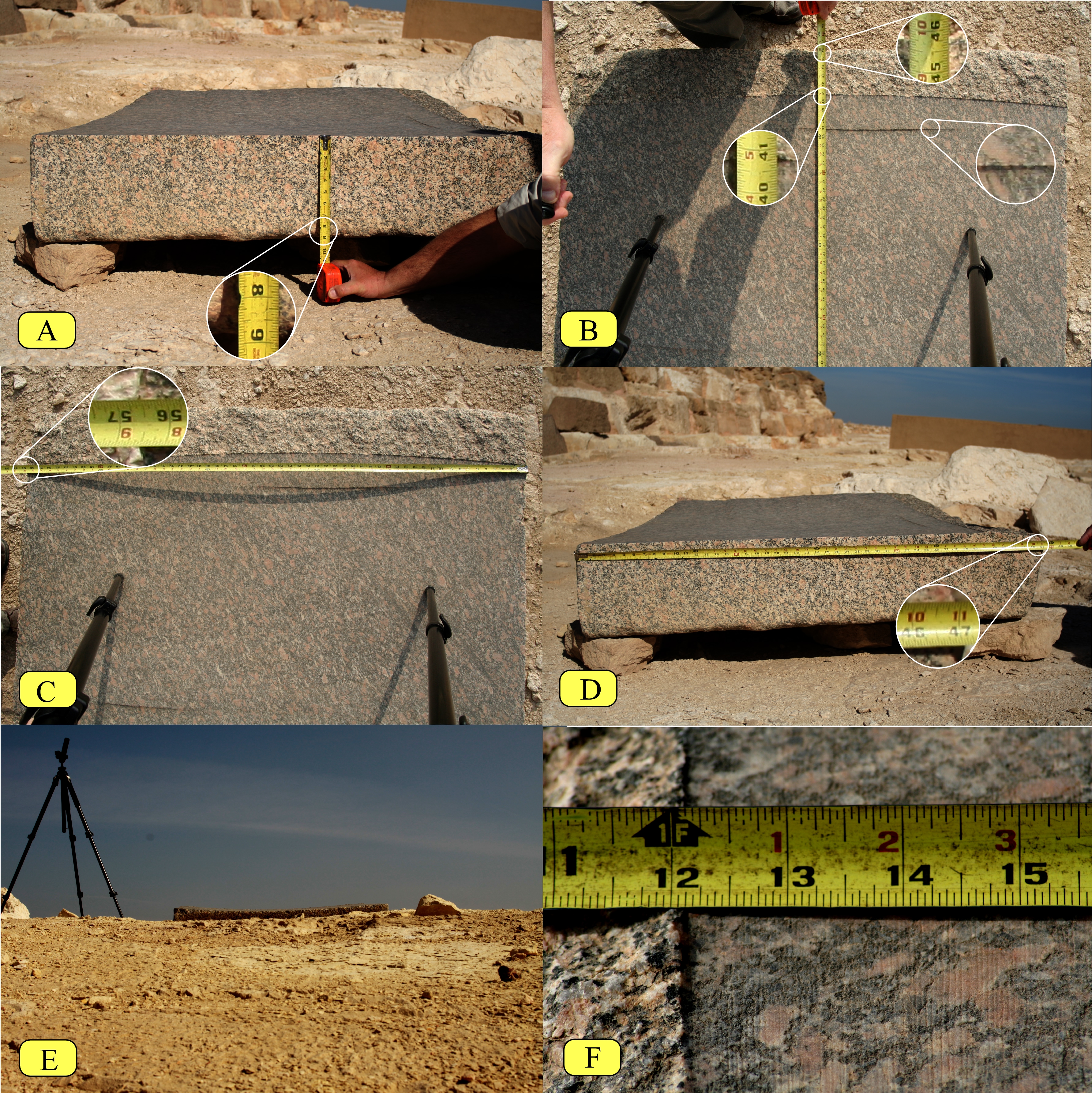
Figure 6. Views of the stone at Abu Roash
Looking closer at the surface of the block in figure 6 - F, we can see striations that are spaced between approximately 0.030 inch (0.762 millimeter) to 0.06 inch (1.52 millimeters) apart. These are a common feature on many artifacts found in Egypt, including some holes and the cores that were extracted from the holes. The radius where the cut surface terminates is puzzling when we consider different ways in which the block may have been made. One suggestion made to me was that the blade that cut the piece was a straight saw but that it was warped and cut the curve on the stone face. If that were possible, it would explain one radius on the block, but whether you view the block from above, or along its length, you see a radius. When considering this and pondering on how this inexplicable geometry was cut into the granite, the straight saw has to be eliminated, because it would be impossible for it to cut a concave radius along its face and along its edge. Another suggestion given to me was that the stone was cut by a stone ball swinging from a pivot point. Yet the evidence suggests a far greater amount of control and certainty than that of a swinging ball—regardless of the skill put into the swing.
I tried to imagine a process in which the piece would be cut in one single sawing operation, but I could not come up with a method that did not demand more out of the tool than was possible due to an increase in surface area being cut. In other words, assuming a larger block was being cut along the striated surface with the saw on an angle, depending on the thickness of the entire block, the thin block, which is the one we are studying, would break apart from the thicker one. But passing the stone across the saw on an angle would result in an increase in the surface area being cut. In pursuing an answer to the puzzle, while providing an answer to Petrie’s question about the size of the saw, it was necessary to calculate the radius of the saw—the granite block at Abu Roash, provided the attributes to calculate that the stone was cut with a circular saw that was over 37 feet in diameter. This seems almost impossible to believe, but the evidence is cut into the stone for anyone to measure and illustrated in figure 7 and 8 for verification.
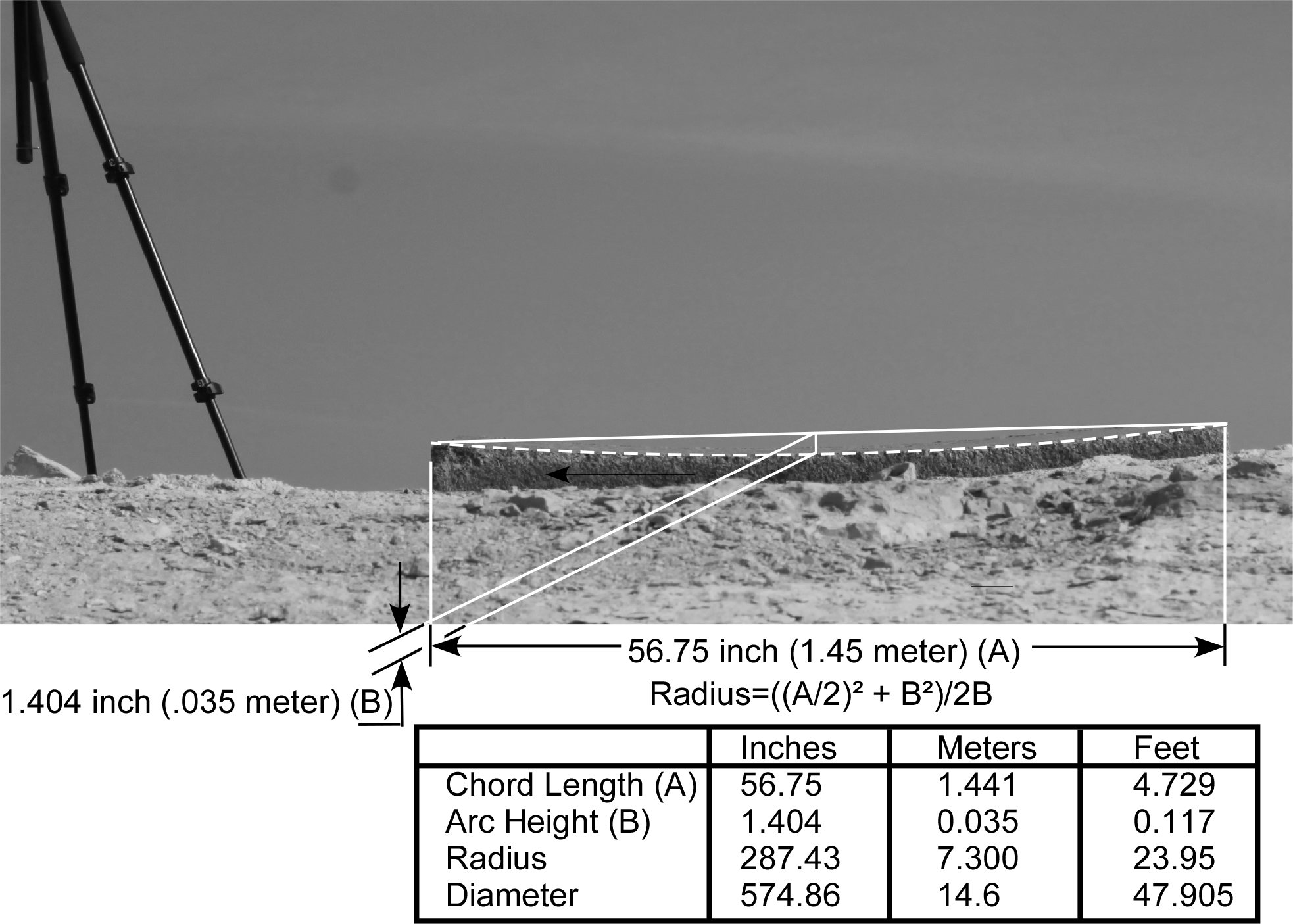
Figure 7. Axial view of Abu Roash Stone
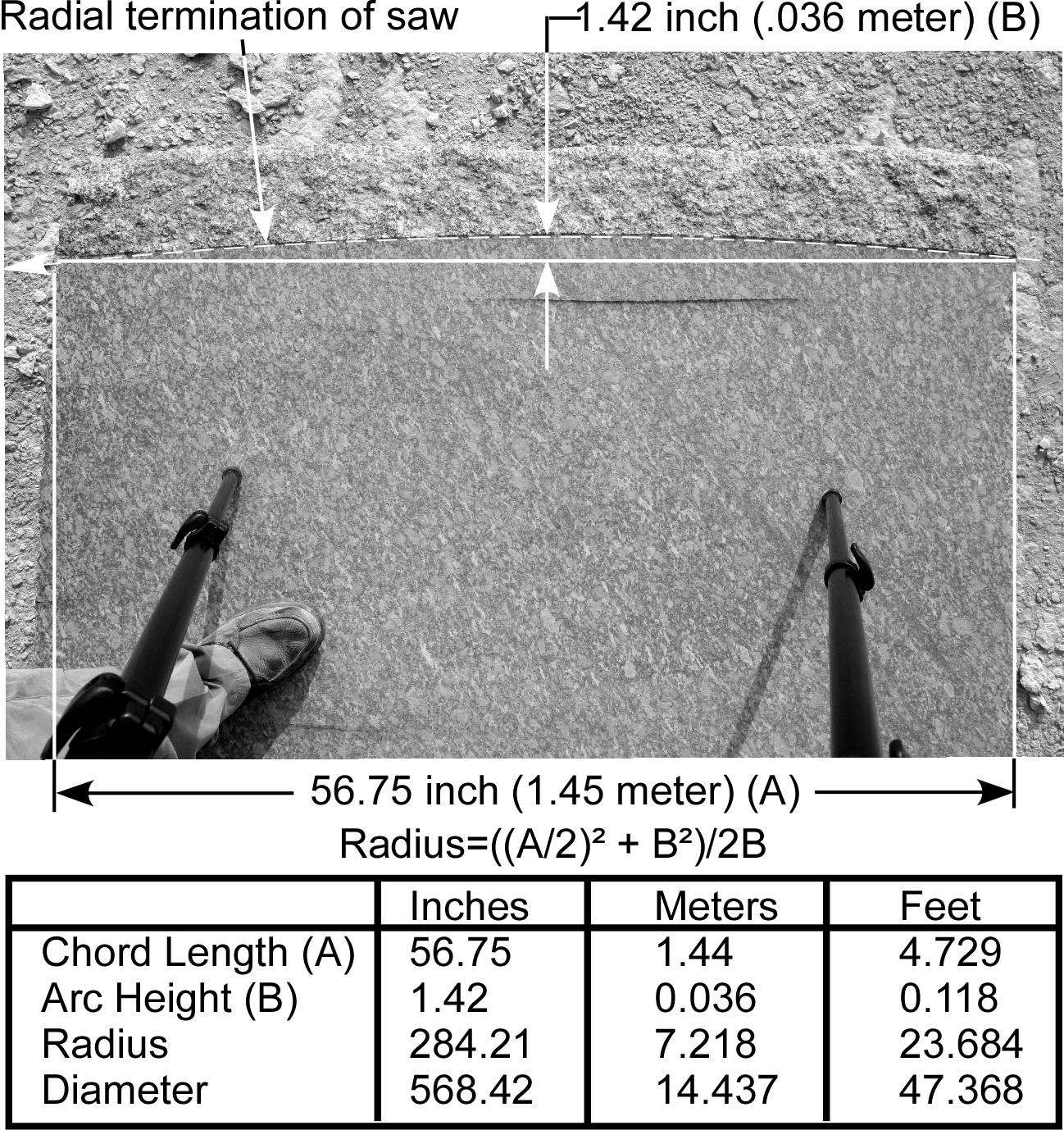
Figure 8. Top view of Abu Roash Stone
The boxes in the Serapeum, the Ramses Statue and the stone at Abu Roash, are three examples of many that have been closely examined and are discussed in Lost Technologies of Ancient Egypt. Other unique artifacts, include the Hypostyle Hall in the Temple of Denderah, the contoured blocks on the Giza Plateau, the Unfinished Obelisk and the infamous Petrie’s core #7, a unique artifact that has been a source of controversy since Petrie first discovered it. And the White crown of Upper Egypt – a remarkable example of ancient Egyptian geometry and manufacturing. Ellipsoids and ellipses were part and parcel of the ancient Egyptian knowledge. The stunning evidence is precisely crafted into hard granite and speaks louder than any tomb drawing about the amazing capabilities of the ancients.
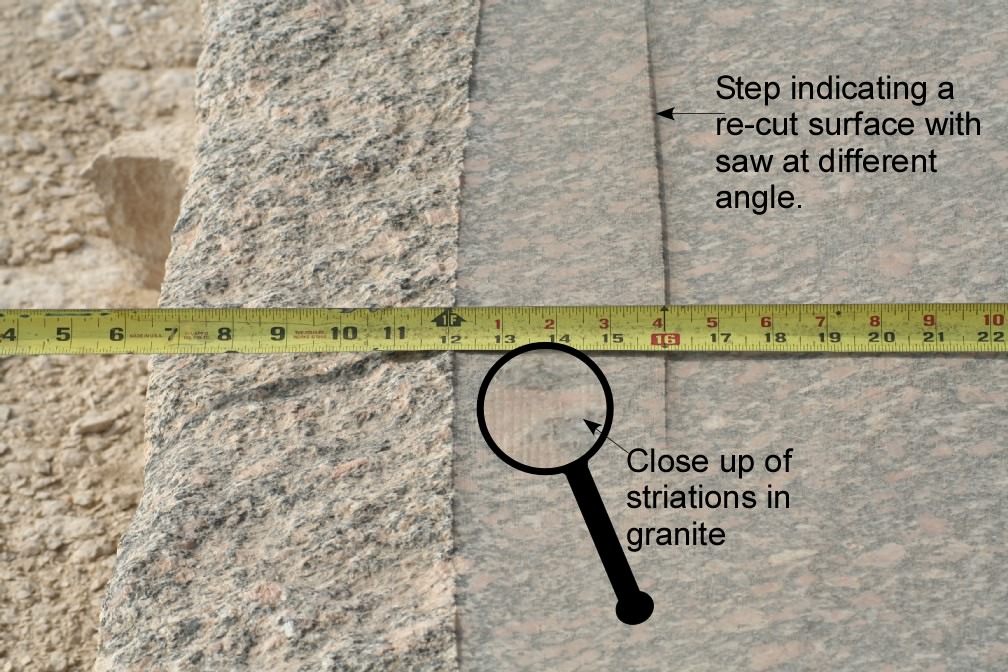
From Giza Power @ http://www.gizapower.com/LoTeAnArticle.htm

A Professional Tool-Design Engineer with Startling New Evidence that the Great Pyramid May Have Been Wired for Electricity
By
Has the interest in pyramid discoveries waned, or was this exploration another casualty of the Arab Spring, which saw a revolution in Egypt that ousted President Hosni Mubarak and saw the staccato-like firing/hiring/firing of one of the world’s most prominent Egyptologists, Zahi Hawass? Perhaps the exploration in the Great Pyramid earlier this year came at a time when Hawass did not want any attention brought on himself, as he was receiving enough attention by the Egyptian protesters in Tahrir Square who criticized his handling of the affairs of the Supreme Counsel of Antiquities (SCA). With the recent changes in Egypt’s power structure, we are left to ask:
What are the implications behind the relative silence from the SCA regarding this exploration?
Will the Southern Shaft of the Queen’s Chamber and Gantenbrink’s “door” ever rise to prominence again?
Did the discoveries behind Gantenbrink’s “door” support or contradict the many theories about what would be found there?
Going back as far as the seventeeenth century, there are accounts of numerous explorations into the Great Pyramid that have yielded significant new details of the structure. Before 1872, the Queen’s Chamber shafts were no mystery because as far as visitors to the chamber were concerned, they did not exist. All that changed, however, when British explorer, Waynman Dixon, detected a crack in the wall and was able to push a rod deep into the crack without meeting any resistance, prompting him to have the limestone chiseled away revealing a square opening measuring 20.32 cm (8 in) wide and 22.35 cm (8.8 in) high. A similar shaft was subsequently found in the north wall.
Because of the machine-like, technical appearance of the Great Pyramid and the precision with which it was built, I began, in 1977, developing a theory that the original function of the Great Pyramid was intended not to be a tomb but a power plant. Within the context of the power plant with all its attributes and anomalous features which other theories were unable to explain without resorting to symbolism, I found a practical answer. The Queen’s Chamber, I proposed, served as a reaction chamber; and the shafts leading to this chamber supplied two chemicals (I proposed a combination of dilute hydrochloric acid and hydrated zinc) that, when mixed together, created hydrogen.
In 1993, a German robotics engineer, Rudolph Gantenbrink, on contract to install ventilation fans in the King’s Chamber shafts, after cleaning the debris using a robot, proposed that he use his robot, named “Upuaut II” (meaning “opener of the ways”) to coax from the depths of the pyramid more of its secrets by exploring the Southern Shaft in the Queen’s Chamber. While the exits from the shafts from the King’s Chamber are found on the outside of the pyramid, no exit has ever been found for either of the Queen’s Chamber shafts.
I was viewing the exploration by Gantenbrink; and when the robot came to the end of the shaft, what is now famously known as Gantenbrink’s “door” came into view with two metal pins attached. (The shaft due to its small size could only allow a small animal to pass — Gantenbrink does not call the block a “door,” as have various Egyptologists — but rather a USO, or Unidentified Stone Object, a nomenclature that I will adopt for purposes of this article.) A friend immediately claimed that they looked like electrodes, which made sense to me; for in order to maintain the head pressure, the shafts had to be kept full, and electrodes could serve as a switch to signal replenishment. In 1998, my book, The Giza Power Plant, incorporated this theory.
Then in 2002, to much fanfare and excitement, “Opening of the Lost Tomb”, which offered to show live a new exploration of the Queen’s Chamber Southern Shaft, was broadcast in Europe by National Geographic and in the U.S. by Fox Television. The documentary captured 30 million viewers in the U.S. alone, glued to their television sets to watch a new robot named “pyramid rover” drill through the limestone block which held the metal fittings and then insert a camera through the hole to see what lay beyond.
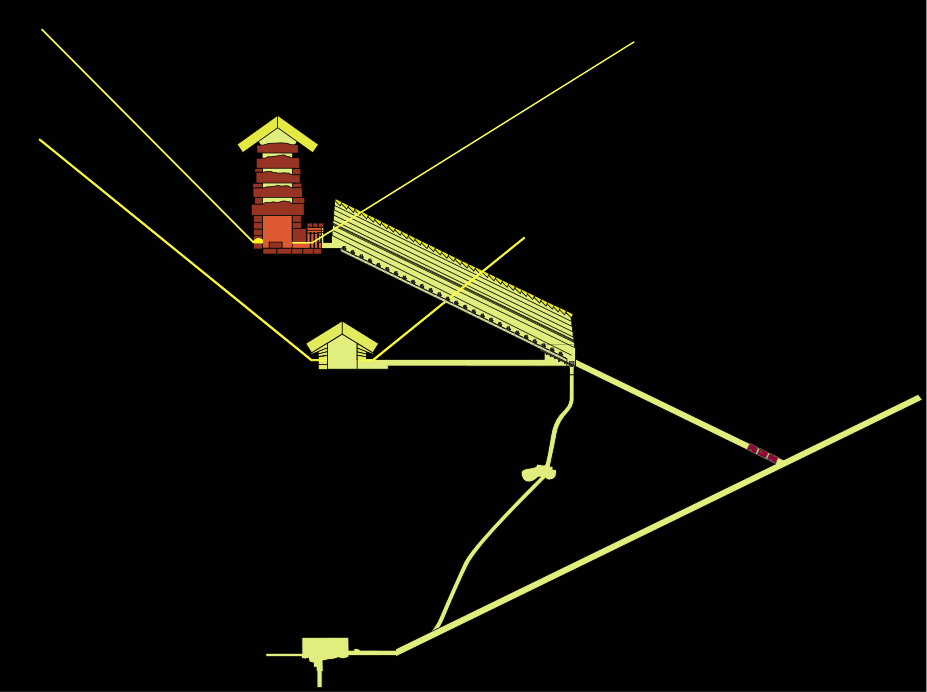
Prior to this broadcast, I posted two articles on my website explaining the reasoning behind my analysis of these shafts and what would be revealed if we were able to look behind it. Based on what I wrote in The Giza Power Plant, the last article outlined a prediction of what would be found behind the “USO.” The prediction included a drawing of the continuation of the metal fittings, or wiring attached to them, and a chemical supply shaft for the delivery of the chemical. The information gathered by the robot was not conclusive, but parts of the theory were supported—particularly the USO’s thickness.
Following the 2002 exploration, an occasional report would appear that promised a new exploration in the near future. Then on May 25, 2011, an article appeared in New Scientist online magazine describing the latest exploration of a new robot, named Djedi, which provided new images taken behind the USO. These images show that my design concept, while being a workable solution, was not quite correct. But far from being dismayed, I was impressed that the ancient Egyptians’ design was much better and delighted to note that greater evidence had been revealed than I had hoped!
I was astonished that information regarding this long awaited exploration had been released without fanfare. Zahi Hawass, the minister of antiquities in Egypt, and director of this recent expedition, described these internal features as the “last great mystery of the Great Pyramid.” With the last exploration broadcast on Fox television in the U.S. garnering 30 million viewers, why was National Geographic or Fox television not involved?
Reading the article and looking at the grainy images of the back of the stone block with the metal fittings, it became clear that the author and expedition team members were aware of the power plant theory. Rowan Hooper writes, “Metal is not part of any other known structure in the pyramid, and the discovery ignited speculation that the pins were door handles, keys or even parts of a power supply constructed by aliens.”
As the first person to publish a work that described the pins as electrical devices, I must set the record straight that I have never credited the construction of the Great Pyramid to aliens, or any other people, except the indigenous people living in that area at the time. Moreover, the discovery of the pins in 1993 was not the trigger that gave birth to the idea that the Great Pyramid was a power plant; they simply enhanced the proposed use that I had formulated in 1977 for the Queen’s Chamber and the shafts. Shaun Whitehead, the camera designer from the company Scoutek in Melton Mowbray, UK, said, “Our new pictures from behind the pins show that they end in small, beautifully made loops, indicating that they were more likely ornamental rather than electrical connections.”
Kate Spence, an Egyptologist at Cambridge University, UK, indicated that the USO would have served a symbolic purpose, a door with door handles. This notion has been proposed before. German Egyptologist, Rainer Stadelmann, speculated in the 2002 documentary that the pins were symbolic door handles for the King to use to symbolically raise the door so that his soul can fly off to the stars to which the pyramid shafts are allegedly aligned.
The continuation of the pins on the backside of Gantenbrink’s USO was not the only discovery captured by the new robot. The images also revealed some mysterious symbols drawn on the floor in red paint. Peter Der Manuelian, an Egyptologist at Harvard University and director of the Giza Archives at the Museum of Fine Arts, Boston, said “Red-painted numbers and graffiti are very common around Giza. They are often mason’s or work-gang’s marks, denoting numbers, dates, or even the names of the gangs.
There was no immediate explanation for what these red symbols mean, but they are a significant discovery and have the potential to open up an entirely new area of research in gaining an understanding of ancient Egyptian symbolism. When considered along with the metal pins the symbols provide key evidence necessary to support the theory of an electrical use of the pins and also give us a roadmap for exploration into the future. Not only did the ancient Egyptians leave us with the physical evidence that proves this to be so, they also provided us with an electrical schematic that showed how the pins were wired!
The first most important discovery is the design of the two pins. Judging by their relationship to the size of the space, the pins are approximately .8 cm (5/16 inch) in diameter. Figure 1 shows the metal loop, with what appears to be a gap where the loop on the right pin seems to be inserted into another hole in the limestone block. The left pin shows signs of corrosion, similar to those in the main shaft, though not as severe. There also seems to be a white deposit around the left pin and its hole, while the right pin has what appears to be a black ring encircling the hole that penetrates through to the main shaft.
As these images did not match those that I had predicted, the expedition team evidently believed that the controversy had been settled and that that they served as more mundane objects and not electrical devices. This conclusion certainly would be more acceptable to those who hold the keys to the pyramid and control what information is given to the public. Also overlooked in the report was the somewhat faint evidence of a cable curling out of the top of the USO near the center and traveling along the ceiling. (See Figure 2)
The image of the floor behind the USO is especially intriguing (see Figure 3 & Figure 4). The patchwork of stitched together images reveals a wealth of information. The helical wraps of more flexible conduit can be seen lying on the floor near the bottom of the image just left of the red painted line—probably left there by the maintenance crew. The metallic appearance of this object and the helical turns of the metal have the same appearance as a length of flexible conduit that has been pulled apart while being disassembled would have. There are indications of more lengths of this material on the floor that are not as distinct as this one. Also just above and to the right of the red line is what appears to be an opening in the floor with anomalous objects nearby and one of them seeming to disappear into the opening.
While it appears that the maintenance crew did not clean up after performing repairs in the space behind the USO, the debris was not the only evidence they left there. They also left instructions on how to wire the pins! These instructions were painted as symbols onto the floor and represent a simple wiring diagram. The uppermost symbol – depicted as a number 5 with the lower loop almost closed, represents the left connector through which the pin is pushed until the end of the loop meets the limestone. The pin was probably tapered at the end which allowed it to enter the loop and gradually push it open while the connector loop held onto the pin as it tried to achieve its original shape. The vertical leg of this connector is not to scale (as very few wiring diagrams are), but the actual connector probably had a longer vertical leg up to the point when it is bent at right angles towards the center of the USO where the cable is located.
The center symbol that shows a round circle with a forked line below it could represent the cable through which electricity flowed. It is positioned between the upper and lower connector symbols on the floor as the flexible conduit is positioned between the right and left pins in the USO. The lower connector symbol is roughly similar to the upper with the exception of the top bend, which could go right or left as when installed it wouldn’t matter which way the loop was turned. All the symbols, including the line (which would logically represent the main cable coming from the USO) were more than likely positioned on the side that would identify the positive electrode.
All that has been revealed by the Djedi robot describes an electrical device which was accessible to workers for maintenance. Considering the erosion on the pins in the main shaft (the negative electrode having broken off in antiquity) and considering the extreme tapering that was more than likely caused by the rise and fall of a corrosive liquid, another significant conclusion that can be made is that these electrodes must have been replaced periodically. At the same time, the electrical cables were probably replaced and some of the shielding was left in the space. The entire design supports this view! The pins were made so that they could be removed easily and another one put in its place. Also, seating the lower loop into a blind hole would prevent the electrode from turning in the hole. After it was seated in position, the pin protruding into the main shaft would be bent 90 degrees and fixed securely in operating position.
Gantenbrink’s Upuaut II also revealed another important feature of the electrodes. After they were positioned in the hole, a sealant was applied and this can be seen clearly in Figure 8.
The implications of robot Djedi’s mission are stunning. They clearly indicate that there is access to the end of the Queen’s Chamber shafts and a passageway exists within the pyramid. This lends support for part of Pierre Houdin’s internal ramp theory and suggests that one must exist for access to the Queen’s Chamber shafts. Perhaps other parts of the structure, also!
Besides prompting further exploration in the Great Pyramid, to find ancient symbols and to be able to clearly connect them with a knowledge and use of electricity in prehistory is extremely exciting. It opens up a whole new area of study using knowledge and tools that have been previously excluded from ancient Egyptian studies…
www.gizapower.com
From Atlantis Rising @ http://atlantisrisingmagazine.com/2011/11/01/the-pyramid-electric/
From http://www.youtube.com/watch?v=BUjYsOXm3IA
Pt 2 @ http://www.youtube.com/watch?v=pzTl2Iyt_Ro&feature=channel
Pt 3 @ http://www.youtube.com/watch?v=lyRt7F8JxsE&feature=channel
Pt 4 @ http://www.youtube.com/watch?v=xAMRUGqssdA&feature=channel
Pt 5 @ http://www.youtube.com/watch?v=afe2h9QnCDo&feature=channel
Pt 6 @ http://i4.ytimg.com/vi/SF37FjUDxso/default.jpg
Pt 7 @ http://www.youtube.com/watch?v=y2iVYvd1Bsw&feature=channel
Pt 8 @ http://www.youtube.com/watch?v=vyOUs0HJ8kk&feature=channel
Pt 9 @ http://www.youtube.com/watch?v=a1GWL7YLfnk&feature=channel
Pt 10 @ http://i1.ytimg.com/vi/L6AzBW4RE6w/default.jpg
The Giza Power Plant: More Evidence
…I don't think I have ever been as surprised as I was while filming inside the Grand Gallery. (Not even when my teenage son gave me a hug.) It was especially rewarding as I had my doubts whether I would get to go into the Great Pyramid as it was closed to visitors, ostensibly for restoration, and we had spent almost a week of uncertainty as to whether access to the Great Pyramid would be granted. After numerous calls and visits to government officials, the organizers of the conference finally got the go-ahead.
While the group entered a meditative state in the King's Chamber, the film crew and I went out into the Grand Gallery to do some filming. I was going to describe, on film, my theory about the function of the Grand Gallery. This involved pointing out the slots in the gallery side ramps, the corbeled walls and the ratchet style ceiling. I was equipped with the microphone, and stood in position just below the Great Step while the camera was position on top of it. As the sound guy, adjusted his equipment, I scanned the wall with my flashlight. I noticed that the first corbeled ledge had some scorch marks underneath it, and that some of the stone was broken away. Then the camera lights came on and things became really interesting.
In all the literature I had read, the Grand Gallery is described as being constructed of limestone. But here I was looking at granite! I noted a transition point further down the gallery where it changed from limestone to granite. I scanned the ceiling and saw, instead of the rough crumbling limestone one sees when first entering the gallery, what appeared to be, from 28 feet below, smooth highly polished granite. This was highly significant to me. It made sense that the material closer to the power center would be constructed of a material that was more resistant to heat.
I then paid closer attention to the scorch marks on the walls. There was heavy heat damage underneath each of the corbeled layer for a distance of about 12 inches, and it seemed as though the damage was concentrated in the center of the burn marks. I then visually took a straight line through the center of each scorch mark and projected it down towards the gallery ramp. That was when the chills ran down my spine and the hair stood out on my neck. The line extended down in alignment with the slot in the ramp!
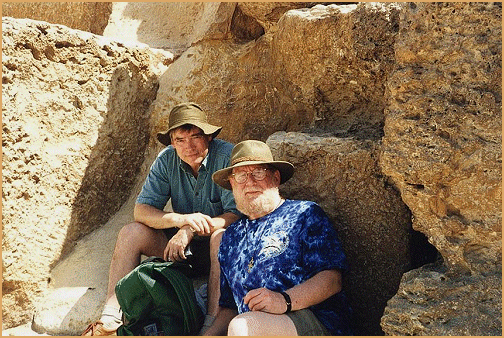
Chris Dunn and Stephen Mehler just after they had exited the Great Pyramid.
(Photograph courtesy of Tim Hunkler)
In The GIZA POWER PLANT, I had theorized that harmonic resonators were housed in these slots and were oriented vertically toward the ceiling. I had also theorized that there was a hydrogen explosion inside the King's Chamber that shut down the power plant's operation. This explosion explained many other unusual effects that have been noted inside the Great Pyramid in the past, and I had surmised that the explosion had also destroyed the resonators inside the Grand Gallery in a terrible fire.
Even as I finish up this article, I am receiving additional confirmation that I'm on the right track. Others are stepping forward with their own research that goes along the same lines. A complete update on this, though, will have to wait for another time. Perhaps when the Egyptian government discloses what they find behind Gantenbrink's "door" in March 2000? I am most anxious to know what is discovered behind this so-called "door." If my own prediction is correct, then yet another aspect of the power plant theory will be confirmed.
It has been an interesting year, to say the least.
© Copyright 1999 Christopher Dunn
Please Help Keep This Unique Site Online
Donate any amount and receive at least one New Illuminati eBook!
For further enlightening information enter a word or phrase into the search box @ New Illuminati or click on any label/tag at the bottom of the page @ http://nexusilluminati.blogspot.com
And see
New Illuminati – http://nexusilluminati.blogspot.com
New Illuminati on Facebook - https://www.facebook.com/the.new.illuminati
New Illuminati Youtube Channel - http://www.youtube.com/user/newilluminati/feed
The Her(m)etic Hermit - http://hermetic.blog.com
This material is published under Creative Commons Fair Use Copyright (unless an individual item is declared otherwise by copyright holder) – reproduction for non-profit use is permitted & encouraged, if you give attribution to the work & author - and please include a (preferably active) link to the original along with this notice. Feel free to make non-commercial hard (printed) or software copies or mirror sites - you never know how long something will stay glued to the web – but remember attribution! If you like what you see, please send a tiny donation or leave a comment – and thanks for reading this far…
From the New Illuminati – http://nexusilluminati.blogspot.com
This comment has been removed by the author.
ReplyDeleteThese are truly amongst the wonderful informative blogs.
ReplyDeletetechnology
Dr OBUDU have been a great doctor even know in the world, am here today to tell the world my testimony about how i was cured from herpes.i was having this deadly disease called herpes in my body for the past 6 years but now i know longer have it again. i never know that this disease have cure not until i meet someone know to the world called Dr OBUDU he cured me from herpes he have been great to me and will also be great to you too. i have work with other doctor but nothing come out. one day i did a research and came across the testimony of a lady that also have same disease and got cured by Dr OBUDU. then i contacted his email and told him my problem.he told me not to worry that he have the cure i didn't believe him when he said so because my doctor told me there is no cure.he told me i need to get a herbal medicine for the cure which i did and now am totally cured you can also be cured of any other diseases too if only you believe in him. contact him via email OBUDU.MIRACLEHERBALHOME@GMAIL.COM you can also call or whatsapp him true his mobile number +2347035974895
ReplyDelete